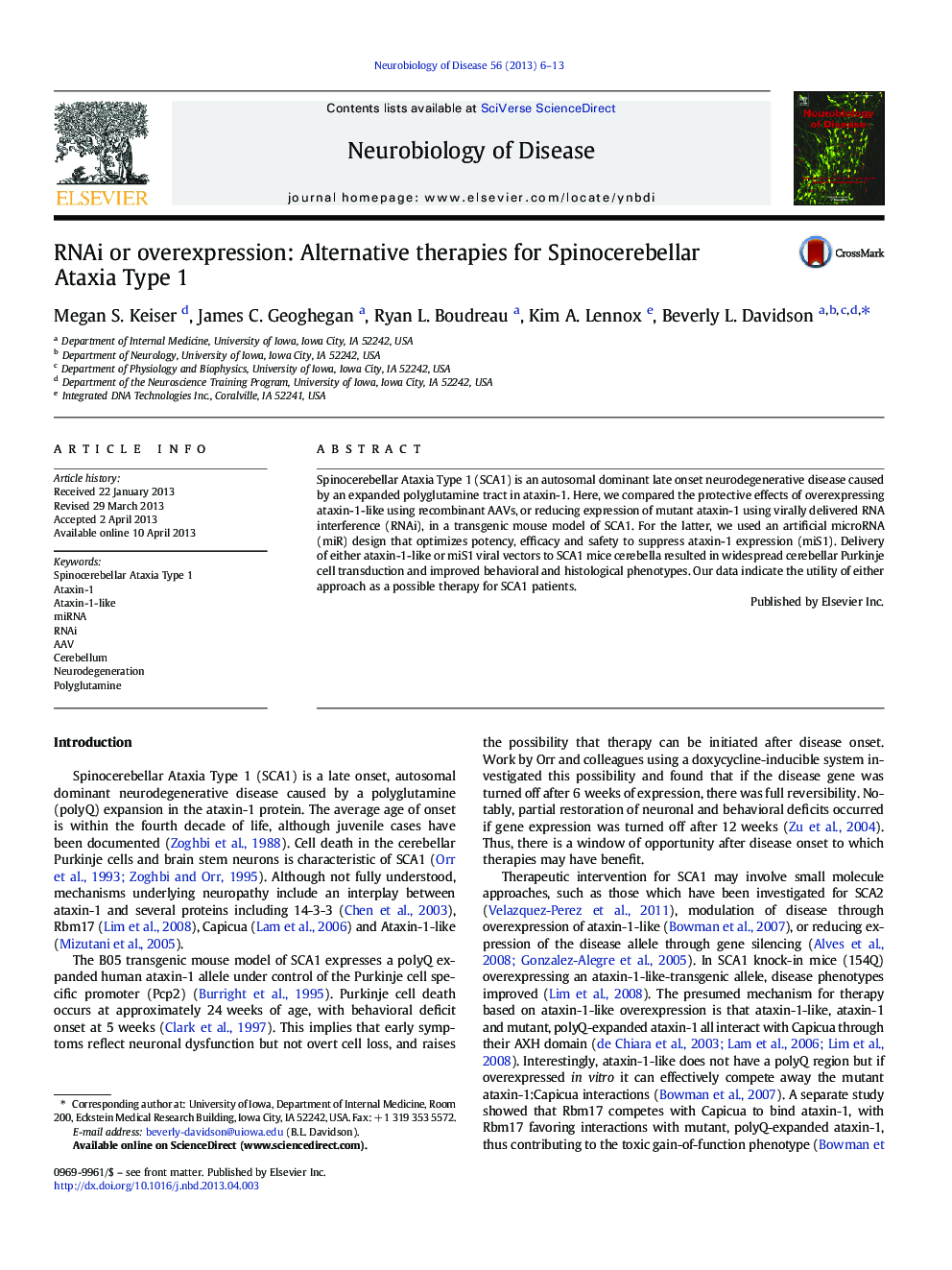| Article ID | Journal | Published Year | Pages | File Type |
|---|---|---|---|---|
| 3069397 | Neurobiology of Disease | 2013 | 8 Pages |
•AAV-expressed human ataxin-1-like improves behavior and histology in SCA1 mice.•Ataxin-1-like interacts with mutant ataxin-1 in vivo.•Prolonged reduction of ataxin-1 via artificial miRNAs rescues SCA1 phenotypes.
Spinocerebellar Ataxia Type 1 (SCA1) is an autosomal dominant late onset neurodegenerative disease caused by an expanded polyglutamine tract in ataxin-1. Here, we compared the protective effects of overexpressing ataxin-1-like using recombinant AAVs, or reducing expression of mutant ataxin-1 using virally delivered RNA interference (RNAi), in a transgenic mouse model of SCA1. For the latter, we used an artificial microRNA (miR) design that optimizes potency, efficacy and safety to suppress ataxin-1 expression (miS1). Delivery of either ataxin-1-like or miS1 viral vectors to SCA1 mice cerebella resulted in widespread cerebellar Purkinje cell transduction and improved behavioral and histological phenotypes. Our data indicate the utility of either approach as a possible therapy for SCA1 patients.
